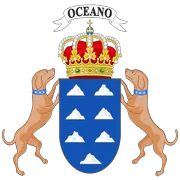Towering over the Canary Islands, Mount Teide stands as a colossal testament to nature’s raw power and beauty. This dormant volcano, located on the island of Tenerife, captivates visitors from across the globe with its awe-inspiring presence and otherworldly landscapes. As Spain’s highest peak and the third-largest volcano on Earth, Mount Teide offers an unparalleled experience for adventurers, nature enthusiasts, and those seeking a glimpse into the geological marvels of our planet.
Rising to an impressive height of 3,718 meters (12,198 feet) above sea level, Mount Teide dominates the skyline of Tenerife. Its imposing silhouette can be seen from nearly every corner of the island, serving as a constant reminder of the volcanic forces that shaped this Atlantic archipelago. The volcano and surrounding area form the heart of Teide National Park, a UNESCO World Heritage Site renowned for its exceptional natural beauty and scientific significance.
The journey to Mount Teide is an adventure in itself. Visitors can ascend the mountain by cable car, which whisks them up to 3,555 meters in just eight minutes. This thrilling ride offers breathtaking panoramic views of Tenerife and neighboring islands, providing a bird’s-eye perspective of the dramatic landscape below. For those who prefer a more challenging approach, hiking trails of varying difficulties wind their way up the volcano’s slopes, allowing trekkers to immerse themselves in the unique flora and fauna of the region.
Upon reaching the upper station, visitors find themselves in an almost lunar-like environment. The landscape is characterized by rugged terrain, bizarre rock formations, and a palette of earthy hues ranging from deep reds to ashen grays. This otherworldly scenery has been featured in numerous films and television shows, most notably as a backdrop for “Star Wars” scenes and “Planet of the Apes.”
For the truly adventurous, a permit can be obtained to hike to the very summit of Mount Teide. This final ascent rewards climbers with spectacular 360-degree views of the Canary Islands and, on clear days, even glimpses of the African coastline. However, due to the mountain’s protected status and the need to preserve its delicate ecosystem, the number of daily permits is limited, so planning is essential.
The geological significance of Mount Teide cannot be overstated. As a stratovolcano dormant since its last eruption in 1909, it provides scientists invaluable insights into volcanic activity and the Earth’s crust. The surrounding national park showcases various volcanic features, including ancient lava flows, volcanic tubes, and unique rock formations sculpted by millennia of erosion.
The area around Mount Teide is also home to an array of endemic plant species that have adapted to survive in this harsh, high-altitude environment. The Teide bugloss, a striking plant that produces a towering spike of vibrant blue flowers, is perhaps the most famous of these botanical wonders. Visitors in late spring and early summer may witness the spectacular blooming of these and other native flora, transforming the landscape into a colorful tapestry.
As night falls, Mount Teide reveals another facet of its allure. The clear, unpolluted skies above the volcano create ideal conditions for stargazing. The Teide Observatory, located on the mountain’s slopes, is one of the world’s most important astronomical research centers. Visitors can participate in guided stargazing tours, marveling at the Milky Way and distant galaxies in a truly dark sky environment.
For those planning a visit to Mount Teide, it’s important to come prepared. The high altitude and variable weather conditions can make for a challenging environment. Warm clothing is essential, even in summer, as temperatures at the summit can drop significantly compared to the coastal areas. Sunscreen, water, and sturdy footwear are also must-haves for any excursion on the mountain.

